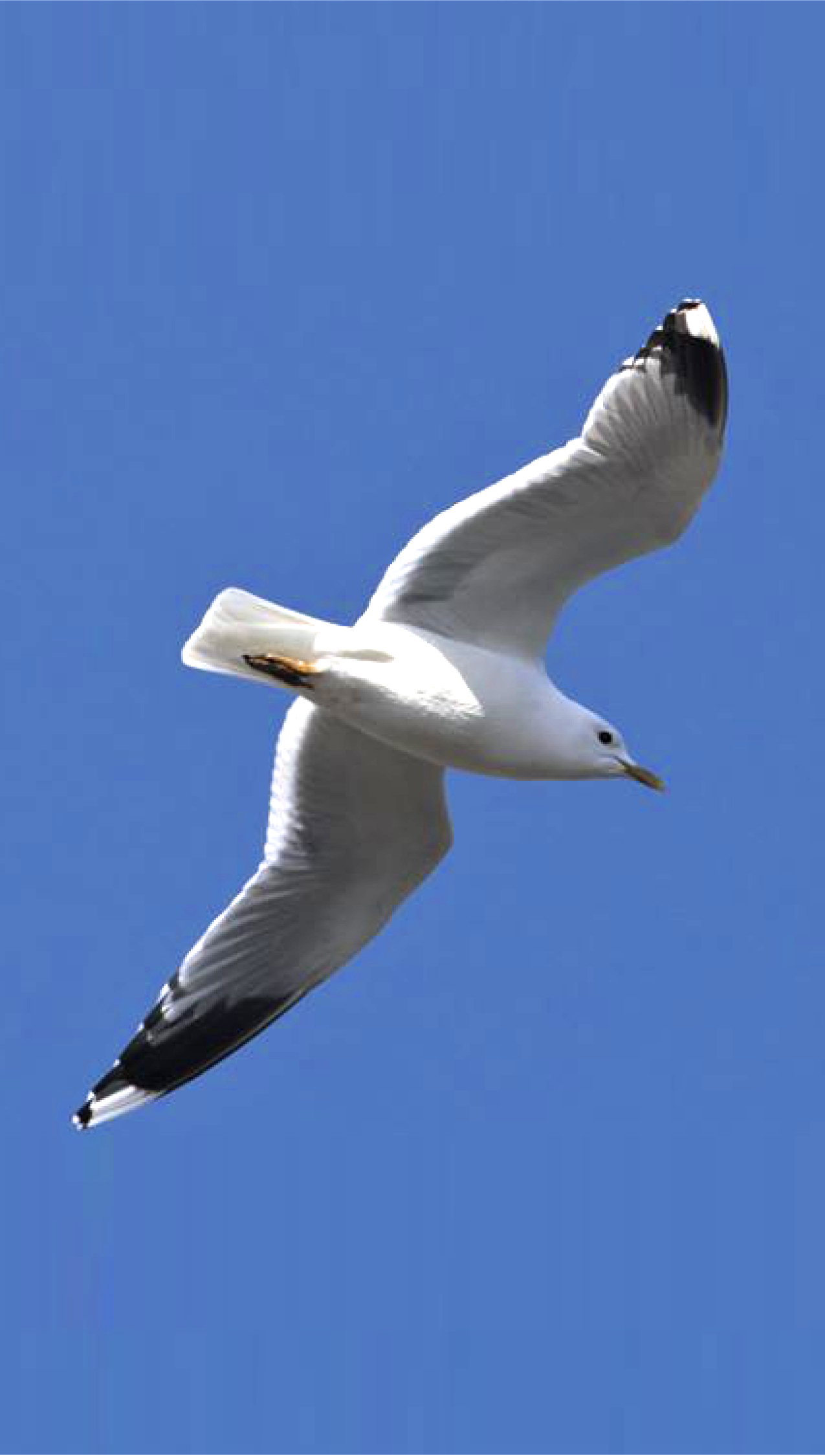
Despite its name, the Common Gull is another ‘common’ that is not all that common. It is difficult to find in most inland areas, being more abundant in its breeding areas on the coast and on wetlands. In winter, like other gulls, they are beginning to migrate inland to be found on housing estates, sports fields and landfill sites.

The Common Gull is smaller though has a similar appearance to the larger Herring Gull, but lacks the red spot on its bill and looks more gentle despite its dark eyes. The upper wings are grey, with a large white spot on the black wing tip, which is how to identify them in flight. There is no white on the wing's leading edge, but there is a wide white trailing edge. The head and underparts are white, and their legs are yellow green. The call is higher pitched than other gulls, a mewing "keel-you". One of its names is the ‘mew gull’.
The Common Gull eats almost anything, feeding on aquatic insects, worms, small mammals, carrion, eggs, small fish, crabs and, like other gulls, is partial to a bit of landfill, especially in winter.
It breeds on coastal marshes, sand dunes, rocky ledges, shingle beaches, and sometimes on buildings. Most nest on the coast among colonies of other gulls or terns, though a few small groups nest on northern moorland. There is a large movement of Common Gulls in March as they go to their northern breeding grounds. The nest is built on the ground by both birds from vegetation or seaweed, and 2-5 eggs are laid in May, which hatch after 23 days. The young gulls leave the nest within 5 days and stay in the vicinity, being fed by mum and dad, until they can fly 25 days later when they become bolshy teenagers, soon wanting their independence.
There are 50,000 breeding pairs in Britain, though the number swells to 700,000 in winter as more arrive here from summer nesting grounds in Scandinavia. The number of Common Gulls in Britain has recently declined. This is thought to be due to the draining of marshes.
Their Latin name is 'larus canus' where 'larus' means 'gull'. There is a bit of dispute whether 'canus' refers to 'dog', as its brief call can sound like a small dog, or 'grey' because of its colour. Absentminded scientists have named it and then can't remember why.
Common Gull video courtesy of Avibirds